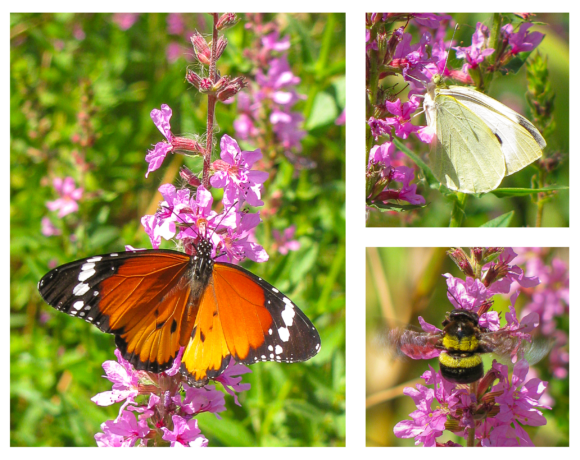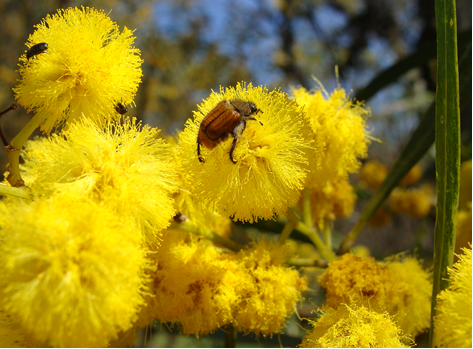5 July 2021 | By Sjirk Geerts
A recent study, published in Biological Invasions, had a closer look at the role of flower structure and pollinators in the reproduction of a new invader in South Africa, called purple loosestrife.
Purple loosestrife (Lythrum salicaria) has been studied widely as a model system in invasion science with studies that have assessed the ecology of the native populations in Eurasia and invasive populations in North America. With this study, the authors added an African perspective on the ecology and reproduction of this invader.
The study conducted by Prof Sjirk Geerts (C·I·B Associate based at Cape Peninsula University of Technology) and Dr Adedoja Opeyemi (Cape Peninsula University of Technology) assessed the ability of purple loosestrife to self-reproduce and whether the delay in its invasion in South Africa is due to a lack of pollination or because the species is tristylous: meaning that there are 3 variants of length of the stamens and style of the flower.
Purple loosestrife is tristylous and full seed set requires that pollen from anthers of the same height as the style is deposited on the stigma. Whereas those occurring between anthers and stigmas at different levels (illegitimate pollinations) fail to produce seeds.
To gather the needed data, the authors sampled pollinators, measured flowers, and compared the production of seed in the presence and absence of pollinators.
They found that purple loosestrife is highly reliant on pollinators, even though it can also produce a few seeds in the absence of pollinators. In South Africa, Cape honeybees (Apis mellifera capensis) and African Monarch butterflies (Danaus chrysippus) are the dominant pollinators, resulting in thousands of small seeds per plant.
Since purple loosestrife flowers readily attracts pollinators and produce large quantities of seeds, the question arises, what is limiting its spread?
For future studies, the following reasons should be considered: limited introduction effort, germination in the field, and the role of early detection and subsequent active management by both the local community and government-funded organizations.
“The presence of all three floral morphs in South Africa pose a significant invasion threat to wetland ecosystems as large amounts of seeds are produced. But whether the same is true for other tristylous alien species remains to be tested,” said Prof Geerts.
“For example, no seed has been recorded for the tristylous Pickerel weed (Pontederia cordata) in South Africa and a recent Masters project suggests that even though there are a number of populations across the country, only the short morph is present in South Africa.”
“Indeed, this might be the first case of invasion being significantly slowed down due to a lack of seeds in a heterostylous species.”
Read the paper
Geerts, S. & Adedoja, O. 2021. Pollination and reproduction enhance the invasive potential of an early invader: the case of Lythrum salicaria (purple loosestrife) in South Africa. Biological Invasions. https://doi.org/10.1007/s10530-021-02549-w
For more information, contact Prof Sjirk Geerts at geertss@cput.ac.za




